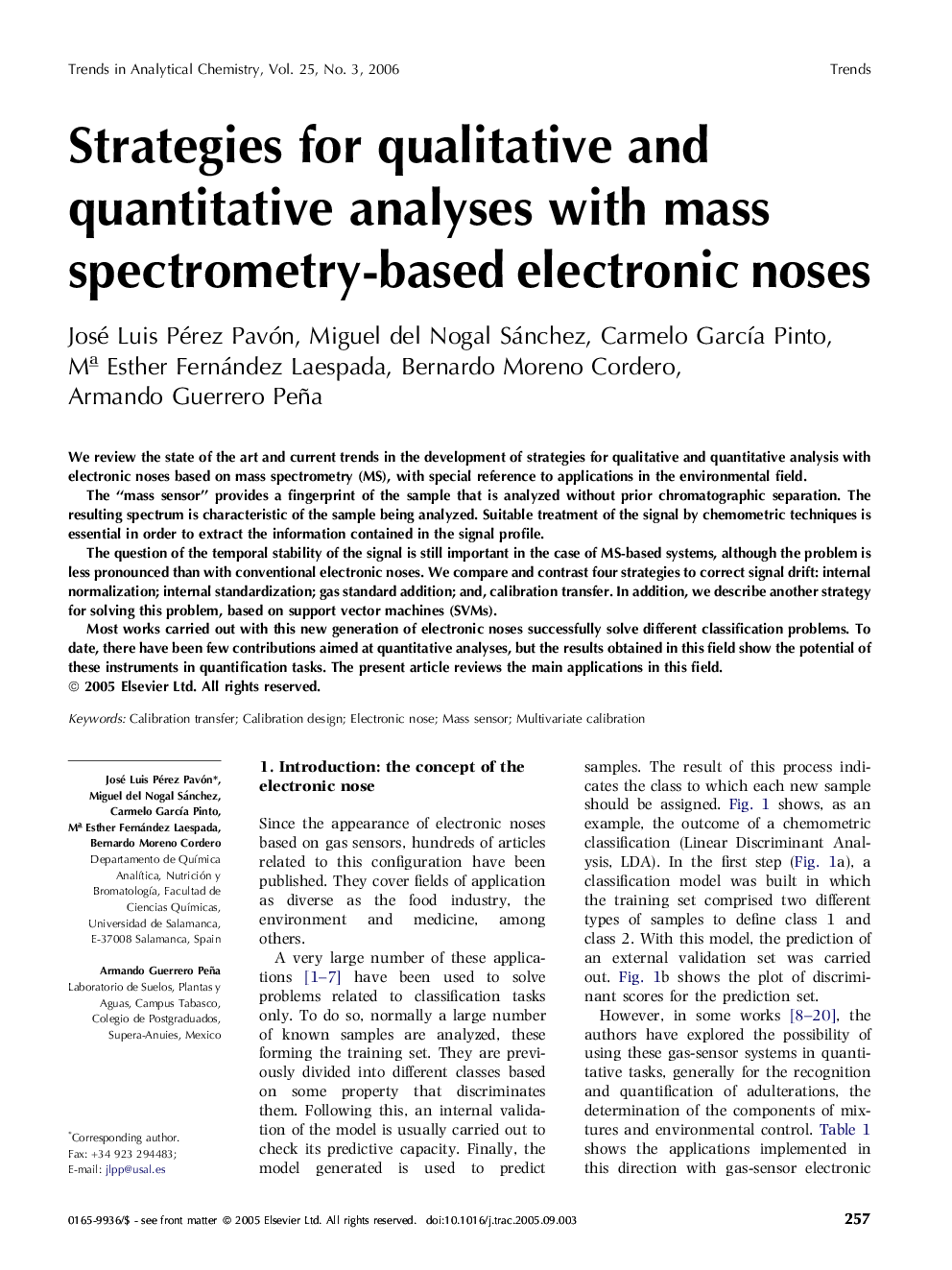| Article ID | Journal | Published Year | Pages | File Type |
|---|---|---|---|---|
| 1248805 | TrAC Trends in Analytical Chemistry | 2006 | 10 Pages |
We review the state of the art and current trends in the development of strategies for qualitative and quantitative analysis with electronic noses based on mass spectrometry (MS), with special reference to applications in the environmental field.The “mass sensor” provides a fingerprint of the sample that is analyzed without prior chromatographic separation. The resulting spectrum is characteristic of the sample being analyzed. Suitable treatment of the signal by chemometric techniques is essential in order to extract the information contained in the signal profile.The question of the temporal stability of the signal is still important in the case of MS-based systems, although the problem is less pronounced than with conventional electronic noses. We compare and contrast four strategies to correct signal drift: internal normalization; internal standardization; gas standard addition; and, calibration transfer. In addition, we describe another strategy for solving this problem, based on support vector machines (SVMs).Most works carried out with this new generation of electronic noses successfully solve different classification problems. To date, there have been few contributions aimed at quantitative analyses, but the results obtained in this field show the potential of these instruments in quantification tasks. The present article reviews the main applications in this field.
